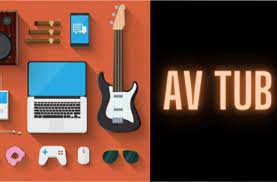In the ever-evolving world of technology, the quest for innovative solutions that enhance our audio and video experiences is relentless. Enter the AV Tub, a groundbreaking development that promises to revolutionize the way we interact with multimedia content. This comprehensive guide delves into the essence of av tub , its operational mechanisms, components, applications, and the myriad of challenges and opportunities it presents.
The Evolution of Audio and Video Technology
To appreciate the significance of AV Tub, it’s essential to understand the journey of audio and video technology. From the early days of radio and black-and-white television to the digital revolution that introduced us to high-definition displays and surround sound, the evolution has been remarkable. Each leap forward has aimed to deliver more immersive, realistic, and engaging experiences. The AV Tub stands on the shoulders of these technological giants, poised to push the boundaries even further.

AV Tub – How It Works
At its core, the AV Tub is an advanced multimedia system designed to enhance both the audio and visual components of digital content. It employs a unique combination of hardware and software to process and synchronize audio and video streams, resulting in a seamless, high-quality playback experience. The system utilizes cutting-edge algorithms to optimize sound clarity and picture resolution, making it an attractive solution for both professional settings and home entertainment systems.
Understanding Its Mechanism
The magic of the AV Tub lies in its sophisticated mechanism that harmonizes audio and video data. This process begins with the decoding of digital signals, where the AV Tub’s software meticulously analyzes and processes each frame and sound byte. By adjusting the timing, color balance, and sound equalization in real-time, the system ensures that the audiovisual output is not only synchronized but also enhanced in quality.
Components
An AV Tub system comprises several key components:
- Processor: The heart of the AV Tub, responsible for decoding and synchronizing audio and video streams.
- Software: Customized applications that run algorithms for optimization and enhancement of multimedia content.
- Input/Output Interfaces: These allow for the connection of various sources of multimedia content, including streaming devices, storage media, and the internet.
- Display and Sound Output: High-definition screens and surround sound systems that deliver the enhanced content to the user.
Its Applications
The versatility of AV Tub technology finds applications in numerous fields:
- Home Entertainment: Transforming living rooms into mini-theaters with cinema-quality audio and visuals.
- Education: Offering immersive learning experiences with high-quality educational videos.
- Professional Presentations: Elevating business presentations with superior audiovisual quality.
- Gaming: Providing gamers with an enhanced, immersive gaming experience.
Advantages & Disadvantages Of AV-Tub
Advantages
- Enhanced Quality: Significantly improves audio and video quality, offering a more immersive experience.
- Versatility: Suitable for various applications, from entertainment to professional settings.
- User-Friendly: Designed to be intuitive and easy to use, requiring minimal technical knowledge.
Disadvantages
- Cost: The advanced technology and components can make AV Tub systems more expensive than traditional setups.
- Complexity: While user-friendly, the underlying technology is complex, which may pose challenges for maintenance and troubleshooting.
Challenges In AV Tub Implementation
Cost Considerations
Implementing AV Tub technology, especially on a large scale, can be costly. This includes the expenses related to acquiring high-quality components and potential updates or maintenance.
Technical Challenges
Ensuring seamless synchronization between audio and video streams in real-time requires sophisticated software and powerful hardware, posing significant technical challenges.
Compatibility Issues
Integrating AV Tub technology with existing multimedia systems and standards can be challenging, necessitating specialized solutions to ensure compatibility.
The Future Of AV Tub Technology
The potential of AV Tub technology is vast, with ongoing research and development aimed at overcoming current limitations and expanding its applications. Future advancements may include even more seamless integration with emerging technologies such as virtual reality (VR) and augmented reality (AR), further enhancing the user experience.
Conclusion
AV Tub represents a significant leap forward in the quest for perfecting audiovisual experiences. By addressing the challenges and continuing to innovate, this technology has the potential to set new standards in multimedia content consumption.
FAQs
Q: Is AV Tub technology available for consumer use? A: Yes, AV Tub systems are increasingly available for home use, though they are currently more common in professional and commercial settings due to cost considerations.
Q: Can AV Tub technology be integrated with existing home entertainment systems? A: Integration is possible, but it may require additional hardware or software to ensure compatibility with older systems.
Q: What future developments can we expect from AV Tub technology? A: Future developments are likely to focus on reducing costs, improving compatibility with a wider range of devices, and enhancing the overall user experience with more advanced features.


